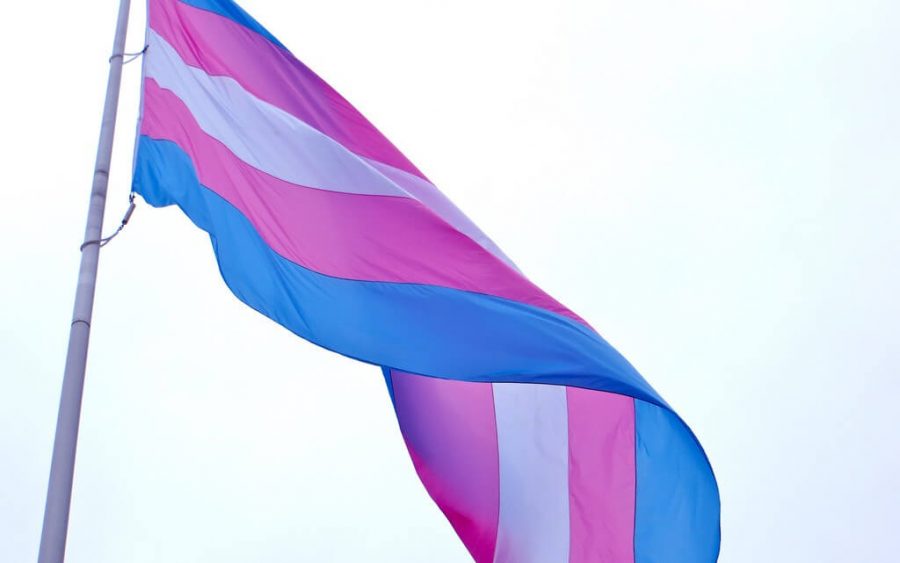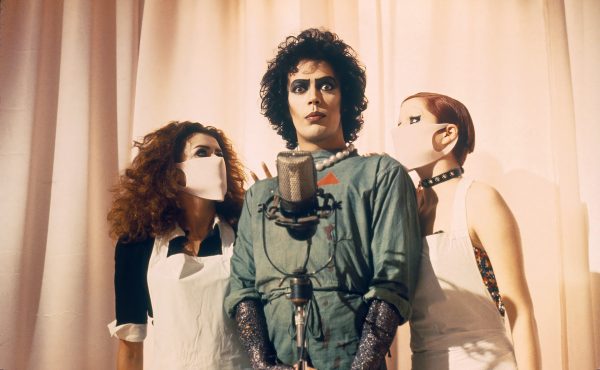Visible
This article makes frequent use of the terms cisgender and transgender, along with their shorthand references, cis and trans. If definitions of these terms are needed before proceeding, please enlighten yourself here.
Friday, March 31, was Trans Day of Visibility. Ever since that day I have been thinking about what visibility means to trans lives. I had discussions with my trans friends, poked and prodded at the idea in my head, and entrenched myself in articles on erasure and proximity. Don’t get me wrong, as an advocate for LGBTQ+ rights, justice, and equity, I think about these things regularly — but Trans Day of Visibility really struck something within me. Trans folks are visible today in our popular culture, with the effervescent Laverne Cox, to the indelible Chaz Bono, to the powerful Gigi Gorgeous.
Proud trans identities have been and still are coming out and coming out strong.
And this form of visibility is important. Representation of identity when witnessed in popular and public spaces is a powerful confirmation of one’s own validity. This is particularly true for youth who are questioning gender and identity (which almost all are, to some degree or another).
But visibility isn’t always what it seems; there’s an unfortunate catch.
When trans individuals become visible, whether by choice or by force, they become significantly more at risk for sexual and physical violence, discrimination, job loss, loss of support from friends and family, alienation. . . the list goes on.
Slurs, slander, taunts, threats, screaming fits, awkward stares, ogling expressions, deeply personal and invalidating questions about one’s own identity and sanity, and service denial are what visibility usually involves for non-binary and trans folk.
What about being screamed at by your own mother asking, nay, pleading with you to explain what she did wrong to ‘make you this way,’ when ‘this way’ is how you have always felt? Or having friends abandon you at the wayside because they aren’t comfortable with your presence any longer, despite literally nothing changing besides their perceptions of you? Or losing one of the strongest foundations for success a person can have because you aren’t the person your parents expected?
But what of institutional risk? Legal risk? What about the active discrimination within healthcare, housing and law enforcement against trans and non-binary citizens? The things many cisgender folks take for granted are often denied to their non-binary and transgender neighbors.
It’s difficult to imagine one’s family, friends and society turning their backs on them for something they didn’t ask for; unfortunately, it’s a hard reality that many trans youth in particular experience.
Despite these barriers, visibility is necessary. With it, attention can be drawn to the constant (and often violent) erasure of trans identities and narratives. Historically, trans people have gained little attention or consideration beyond offensively audacious portrayals on stage and screen — although there is a growing collection of. And this erasure extends well beyond the history books, occurring in major literature, television, film and academic and scientific study.
Hollywood is among one of the worst at erasing trans stories, typified by the allotment of trans roles being bestowed upon cisgender actors — the ubiquitous 1970’s Myra Breckinridge, whose starring role, Myra Breckinridge, a trans woman, was played by cisgender actor Raquel Welch; and there’s Jaye Davison’s performance in The Crying Game; or Hilary Swank’s part in Boys Don’t Cry; but most recently Jared Leto’s portrayal of Rayon, an HIV-positive trans woman, which landed the cisgender actor Oscar and Golden Globe nominations and wins in 2014. Those wins, though, launched the controversy of ‘trans versus cis representation’ into the public discourse.
But this is only one microcosmic look into trans experiences and their portrayals. The topic of visibility is a touchy one within the trans community: with visibility comes the unfortunate truth that visible trans people face the very real and constant threat of violence.
“Visibility is actively getting us killed,” said Gray*, a personal friend, and openly trans vocal activist. “But without it, we are actively reduced to myths or trends and treated as if we aren’t real. I find it a difficult line to toe.”
The discussion between Gray and I illuminated the very real dissonance between cisgender and transgender experiences of trans visibility. It’s easy to rally behind a call for more visibility when you are not the one being looked at; it’s also easier to ignore. For the most part, trans folks don’t get to choose how someone else sees them, something that is taken completely for granted by cisgender people. Regardless of presentation, once a person is known as trans, there is a shift in how they are viewed — they are now seen as ‘other.’
Prior to Trans Day of Visibility, I was fortunate enough to attend two events held at ACC on both Tuesday and Wednesday that week, where prominent queer trans photographer Jess Dugan showcased her journey and thoughts on gender, trans identities and the role of multimedia in promoting inclusion and diversity.

Jess T. Dugan is a photographer whose work explores issues of gender, sexuality, identity, and community. Jess earned a BFA in Photography from the Massachusetts College of Art and Design and an ALM in Museum Studies from Harvard University.
Jess’s photographs are regularly exhibited nationwide and are in the permanent collections of the Harvard Art Museum, The Center for Creative Photography at the University of Arizona, the Michele and Donald D’Amour Museum of Fine Arts, and the Kinsey Institute for Research in Sex, Gender, and Reproduction.
Jess lives and works in Boston, MA and Chicago, IL and is represented by Gallery Kayafas in Boston, MA and the Schneider Gallery in Chicago, IL.
Dugan sees gender as a performance — something we construct outwardly. Her work takes that idea and molds it into its own form of presentation. The lines between expectation and reality get called into question. “I enjoy having my work open to interpretation,” she said. “The work can prompt people to confront their assumptions and go through their own process of working through it.”
Her projects range from toying with ideas of masculinity to the stories of older trans folk to her own relationship with her mother.
In her project To Survive On This Shore, Dugan takes her camera lens and focuses it on older trans and gender-variant folks of intersecting background. “Representations of older transgender people are nearly absent from our culture and within artistic realms, and those that do exist are often one-dimensional. To Survive On This Shore combines photographs of transgender and gender-variant people over the age of fifty with interviews about their life experiences in regards to gender, identity, age, and sexuality and provides a nuanced view into the complexities of aging as a transgender person,” reads the summary of the project on Dugan’s site.
This work is important, as it challenges the viewer’s assumptions about sex, gender, and presentation — but beyond this, her work grants visibility to people who are often ignored even within the trans community — like older trans women of color, for instance.
“Your identity can be confirmed in a powerful way when you are seen by another person,” said Dugan at the Dialogue. This sentiment was echoed in many of the conversations I held with my trans friends on the topic of visibility.

Gloria, 70, Chicago, IL
But what about when the focus on trans individuals is solely on what they identify as and now who they are as people?
Indeed, it seems that when the conversation on trans identity and visibility is brought up by cisgender people, the focus tends to be on who or what a person identifies as, but rarely about who they are as people. Cis people are never subject to the same harassment and hyper-focus that trans people face in terms of their identity.
As a culture, we tend to ostracize and alienate those trans folks brave enough to be open about their identity, focusing solely on their bodies, their presentations or their attitudes when confronted with indignantly inquisitive cisgender questioning. The real focus of our attention on trans folks is on whether or not they are comfortable within the spaces they occupy, and if not, what structures are currently in place that allow that discomfort. We should focus on whether or not trans and gender-variant people feel safe and accepted within the spaces they occupy, and address any social or power structures that contribute.
Ultimately, visibility is about truth.
It is about the truth of trans existence. Visibility is about the truth that trans lives that are visible are also more likely to be violently erased. It is about the truth that trans lives that aren’t visible get erased passively. It is about the truth that trans lives are just that: lives. Trans people are not some mythical creature out of a fairy tale or nightmare, but are living, breathing, existing, feeling, beautiful and complex human beings, with dreams and hopes and fears.
It’s a truth that, for some, is hard to swallow.
Well, tough for them.
If trans folk have to swallow the pill of their lives being in constant danger simply for existing authentically, then others can swallow the pill of trans lives existing. Because visible or not, they are here, they are real, and they are people. They are not a ‘they,’ but a ‘we.’ Us.
Trans lives are our lives. Trans activism is our activism. Trans history is our history. To deny this is to deny truth.
To deny this is to make others invisible.
*names of subjects interviewed were changed to protect identities.










